spyros
Breast reduction
Breast reduction is a procedure that aims at reducing the size and at the same time lifting the breasts. It also contributes in relieving the patient from intense pain in the chest and back caused by heavy breasts. Furthermore, it improves posture. Breast reduction may be performed at any age provided that the development of the breasts has been completed.
During the procedure, the breasts are reshaped so that the areola can be positioned in a more visible and higher level. Excess mammary gland and fat is reduced along with the skin from below the breast and from the sides. Also, if the areola has grown along with the overall enlargement of the breast, it will be reduced to match the size of the new breast. After surgery, that is performed with general anaesthesia, the patient remains in hospital for 1-2 days. Thin drainage tubes are inserted in each breast to prevent liquid/blood accumulation and are usually removed before discharge.
Scars, which usually heal well, are seen around and under the areola, in an inverted-T shape. Scars are also visible along the inframammary fold. Sometimes the procedure may be performed through an incision around the areola and a vertical incision under the areola. Scars are permanent and visible after the procedure, but they improve significantly over time. Depending on the size and shape of the breast, the procedure may be performed through a vertical incision thus avoiding the large horizontal incision. This is the “Lejour” technique or the vertical incision breast reduction procedure and can be performed only in specific cases.
After surgery, the patient is advised to wear a strong support bra for a month. Straight after the procedure, the breasts are bruised, swollen and a bit painful. The pain is easily managed with painkillers. In some cases, healing may be delayed, particularly in areas where much strain is exercised. Special care must be given to wound changing for a few weeks, until full healing is achieved.
Another complication, although rare, is the haematoma that usually occurs the first hours after surgery. Another operation is necessary to manage the situation. Inflammation is also a rare complication that is treated with appropriate antibiotics. Also, some patients may experience hypoesthesia in the area of the breasts, and oedema which usually subside over time. In very rare cases these complications may remain. Moreover, candidate patients should know that following breast reduction, it is possible that they will not be able to breastfeed although their breasts will continue to react (becoming bigger or smaller) to any changes occurring in their body (pregnancy, weight fluctuations, menopause).
Mastopexy - Breast lift
Breast lift or mastopexy is a procedure used for changing the shape of breasts and simultaneously lifting the breasts. During the procedure, the breasts are reshaped so that the areola can be positioned in a more visible and higher level. Excess skin is removed from below the breast and from the side.
Also, if the areola has grown excessively following the overall laxity of the breast, it will be reduced to match the size of the new breast. After surgery, which is performed with general anaesthesia, the patient remains in hospital for one night.
Scars, which usually heal well, are seen around and under the areola, in an inverted-T shape. Scars are also visible along the inframammary fold. Sometimes the procedure may be performed through an incision around the areola and a vertical incision under the areola. Depending on the size and shape of the breast, the procedure may be performed through only one vertical incision. The large horizontal incision can be avoided.
Scars are permanent. Straight after surgery they are reddish and develop hard tissue, but they are smoothed out within a few months and their colour changes to match the skin’s tone. After a while they will only be slightly visible. Also, in some cases, if this is considered necessary, mastopexy can be combined with breast implant placement. The surgeon must co-operate with each patient in order to identify the appropriate technique.
After surgery, the patient is advised to wear a strong support bra for a month. Straight after the procedure, the breasts are bruised, swollen and a bit painful. The pain is easily managed with painkillers. Another complication, although rare, is haematoma that usually occurs the first hours after surgery. Another procedure is necessary to manage the situation.
Inflammation is also a rare complication that is treated with appropriate antibiotics. Also, some patients may experience hypoesthesia in the area of the breasts, and oedema which usually subside over time. In very rare cases these complications may remain. Moreover, interested patients must know that after breast reduction it is possible that they will not be able to breastfeed although their breasts will continue to react (becoming bigger or smaller) to any changes occurring in their body (pregnancy, weight fluctuations, menopause).
Gynecomastia
What is gynecomastia

Gynecomastia is the increase in size of male breasts due to hypertrophy and hyperplasia of the mammary tissue or fatty tissue (false gynecomastia) or both
Gynecomastia comes from the Greek words “gyne” and “mastos” which mean woman and breast, respectively and refers to any condition that causes excessive growth of the male breast tissue.
The male breast consists of the mammary gland and fat called adipose tissue. Patients with advanced gynecomastia have excess skin and sagging breasts.
Galen, the prominent Greek physician of the Roman Empire, was the first to use the word “gynecomastia” in the 2nd century AD to describe the unusual growth of male breast tissue.
Paul of Aegina, one of the pioneering physicians in Byzantium, described the first breast surgery for treating gynecomastia in the 7th century AD.
The problem
Patients who suffer from gynecomastia find no sympathy and feel ashamed and embarrassed.
Coaches, other kids, even parents may cause psychological trauma to patients with gynecomastia.
Patients must seek information about what exactly gynecomastia is and how they can handle the situation.
Gynecomastia therefore involves the increase in size of the male breast. The growing tissue may consist of the mammary gland or the fatty tissue or a combination thereof. Some cases may also involve excess skin as well as sagging breasts.
Pictures of Gynecomastia



Patients present with enlarged breasts which are also asymmetric in 1/3 of cases. Some patients develop gynecomastia on one breast only.
There are 3 types of gynecomastia as per the Webster’s Classification (1934)
Type 1. Patients with enlarged mammary gland; treated through surgery.
Type 2. Patients with fatty tissue and enlarged mammary gland – pseudo gynecomastia – treatment through liposuction and surgery.
Type 3. This is type 1 and type 2 combined with excess skin.
Simon’s classification of gynecomastia (1973).
- Small yet visible increase of breast size
2a. Moderate increase of breast size but normal skin.
2b. Moderate increase of breast size and small degree of excess skin.
3 Very large breast. Breast ptosis. Large degree of excess skin.
Breast Reconstruction
Information
Reconstructive breast surgery offers bodily and psychological joy to a woman who has lost her breast either due to a mastectomy or due to any other condition (injury, burn, congenital abnormality).
It usually includes more than one surgical procedure performed at different stages. Reconstruction may begin along with mastectomy, or at a later stage, after the patient has recovered from radiotherapy.
Διπλού επιπέδου τεχνική
 Ερ. Τον Ιούνιο του 2007 βραβεύτηκε στο Βερολίνο, στο Διεθνές Συνέδριο της Πλαστικής Χειρουργικής ανάμεσα σε 500 εργασίες απ’ όλο τον κόσμο, η εργασία σας “Composite Plane Breast Augmentation: A new Concept”. Σ’ αυτή παρουσιάζατε μία τελείως καινούργια τεχνική για την αυξητική μαστού.
Ερ. Τον Ιούνιο του 2007 βραβεύτηκε στο Βερολίνο, στο Διεθνές Συνέδριο της Πλαστικής Χειρουργικής ανάμεσα σε 500 εργασίες απ’ όλο τον κόσμο, η εργασία σας “Composite Plane Breast Augmentation: A new Concept”. Σ’ αυτή παρουσιάζατε μία τελείως καινούργια τεχνική για την αυξητική μαστού.
Η τεχνική αυτή είναι στην πραγματικότητα τροποποίηση της τεχνικής που παρουσίασε για πρώτη φορά ο Dr Tebbets από το Τέξας, ο γκουρού για μένα και μεγάλος δάσκαλος της αυξητικής του Μαστού.
Ερ. Τι ακριβώς είναι αυτή η τεχνική;
Μέχρι πρότινος ξέραμε δύο τεχνικές στην αυξητική μαστού, όσο αναφορά την τοποθέτηση του ενθέματος, την υπό του αδένος (subglandular) και υπό του μυός (submuscular). Το 2002 ήρθε να προστεθεί και η υποπεριτονιακή τεχνική (Sub Facial). Η δική μας τεχνική συνδυάζει τις δύο τελευταίες τεχνικές. Δηλαδή το ένθεμα σιλικόνης μπαίνει και κάτω από τον μυ και κάτω από την περιτονία του μυός.
Ερ. Νομίζω ότι ακούγεται λίγο μπερδεμένο
Στην πραγματικότητα δεν είναι. Κοιτάξτε το σχήμα 1. Το πάνω μέρος του ενθέματος σιλικόνης καλύπτεται από τον μείζωνα θωρακικό και το κάτω μέρος από την περιτονία του μυός (ένας λεπτός ιστός που καλύπτει τον μυ).
Ερ. Και γιατί να μην χρησιμοποιήσουμε τις παλαιές τεχνικές;
Γιατί καμία τεχνική δεν είναι τέλεια. Κάθε καινούργια τεχνική έρχεται για να προσφέρει κάτι καλύτερο.
Ερ. Εδώ λοιπόν ποια είναι τα πλεονεκτήματα και ποια τα μειονεκτήματα εάν βέβαια υπάρχουν.
Τα πλεονεκτήματα είναι πάρα πολλά:
1. Μειώνονται οι επιπλοκές, όπως του σχηματισμού της ρικνωτικής κάψας. Μια επιπλοκή που βασανίζει το 1-20% των γυναικών που έχουν υποστεί αυξητική του μαστού. Τοποθετώντας το ένθεμα κάτω από τον μυ και την περιτονία ελαχιστοποιούμε την επαφή του ενθέματος με τον μαστικό αδένα και αυτό πιθανολογείται ότι ελαττώνει το σχηματισμό της ρικνωτικής κάψας.
2. Φυσικότερο αποτέλεσμα ειδικά σε αδύνατους ασθενείς με ελάχιστο μαστό. Αυτό επιτυγχάνεται λόγω του ότι το άνω τμήμα του ενθέματος καλύπτεται από τον μυ.
3. Ελαττώνεται η πιθανότητα πτώσης του μαστού. Ο μυς και η περιτονία συγκρατούν το ένθεμα στη θέση του.
4. Αποφεύγουμε τις παραμορφώσεις που μπορεί να υποστεί το ένθεμα από την δύναμη του μείζονος θωρακικού όταν το ένθεμα τοποθετηθεί μόνο κάτω από τον μυ. Η λεγόμενη “open breast” ανωμαλία.
5. Ελαττώνεται η πιθανότητα ψηλάφησης των άκρων του ενθέματος.
6. Δεν σχηματίζονται ποτέ ρυτιδώσεις στο άνω μέρος του μαστού.
Ερ. Και τα μειονεκτήματα:
Μειονεκτήματα ουσιαστική δεν υπάρχουν, εκτός του ότι ο γιατρός χρειάζεται λίγο μεγαλύτερη εμπειρία για την εκτέλεση αυτής της τεχνικής.
Ερ. Χειρουργικά διαρκεί πιο πολύ σε σχέση με τις άλλες τεχνικές;
Όχι, σε έμπειρα χέρια διαρκεί ακριβώς το ίδιο από 30-45 λεπτά.
Ερ. Τοποθετείτε παροχέτευση, δηλαδή σωληνάκι στο μαστό;
Όχι, ούτε παροχετεύσεις ούτε επιδέσμους, ούτε ασφυκτικό κορσέ στον μαστό.
Ερ. Γιατί;
Εδώ ακριβώς εισέρχεται το πρώτο σκέλος του τίτλου αυτού του άρθρου.
Ερ. Δηλαδή το non-touch, no pain: τι σημαίνει;
Κυριολεκτικά σημαίνει δεν αγγίζω, δεν πονάει. Και εξηγούμε. Στη χειρουργική έχει μεγάλη σημασία το πώς συμπεριφέρεσαι τους ιστούς την ώρα που χειρουργείς. Όσο πιο πολύ τους σέβεσαι, δηλαδή δεν τους κακοποιείς και ακολουθείς τελείως ανατομικές και αναίμακτες τεχνικές, τόσο ελαχιστοποιείς τα προβλήματα μετά το χειρουργείο. Το ζητούμενο, σε μια κοινωνία που συνεχώς τρέχει σαν την δική μας, είναι η γρήγορη επάνοδος του ασθενούς στη φυσιολογική ζωή. Στόχος μας είναι ο ασθενής να μπορεί την ίδια μέρα μετά το χειρουργείο να είναι σε θέση να βγει για φαγητό και να πάει σινεμά.
Ερ. Και πως επιτυγχάνεται αυτό;
Χρησιμοποιώντας 1) ειδικά εργαλεία 2) τελείως ατραυματικές τεχνικές και 3) ειδικές ασκήσεις μετά το χειρουργείο
Με τον συνδυασμό των πιο πάνω επιτυγχάνουμε
1. Ταχύτητα ανάρρωσης
2. Στο 90% των ασθενών ο πόνος είναι ελάχιστος και μπορούν την ίδια μέρα να γευματίσουν έξω από το σπίτι τους
3. Όχι σωληνάκια
4. Όχι επιδέσμους στο στήθος
5. Όχι κορσέδες στο στήθος
6. Καθόλου μώλωπες (μελανιές) μετά την επέμβαση
7. Δραματική μείωση επιπλοκών όπως το αιμάτωμα και οι φλεγμονές.
Ερ. Ο συνδυασμός λοιπόν της ατραυματικής αυτής τεχνικής και του διπλού επιπέδου τεχνικής θα έχει ελαχιστοποιήσει ακόμα περισσότερο τα προβλήματα μετά το χειρουργείο;
Δραματικά. Οι επιπλοκές και οι επανεγχειρήσεις βρίσκονται αυτή τη στιγμή σ’ ένα ποσοστό μικρότερο του ένα τοις εκατό (1%). Ενώ το ποσοστό ικανοποίησης των γυναικών απ’ αυτή την επέμβαση αγγίζει το 98-99%, πράγμα που είναι και το ζητούμενο.
Botox
Γενικές πληροφορίες για το Botox
Τι είναι το Βοtοx ή Dysport ή αλλαντοική τοξίνη Α;Η Αλλαντική τοξίνη τύπου Α είναι μία πρωτεΐνη, η οποία παράγεται από το κλωστηρίδιο Botulinum και έχει γίνει γνωστή στον κόσμο, ως BOTOX. Eίναι αναμφισβήτητα ό,τι καλύτερο διαθέτει σήμερα η πλαστική χειρουργική για την εξαφάνιση των ρυτίδων στο πρόσωπο. Κυκλοφορεί σε δύο (2 ) συσκευασίες: σαν Botox (Allergan) και σαν Dysport (Ipsen).
Είναι δημοφιλής θεραπεία;
Το 2009 πραγματοποιήθηκαν 10 εκατομμύρια Botox/Dysport.
Πως δρα το Botox/ Dysport;
Η πρωτεΐνη του Botox-Dysport ηρεμεί-χαλαρώνει συγκεκριμένους μύες του προσώπου, με αποτέλεσμα, λόγω της μη σύσπασής των, να εξαλείφονται οι ρυτίδες του προσώπου.
Ποιες ρυτίδες εξαλείφονται;
Οι πιο συνηθισμένες ρυτίδες, οι οποίες εξαλείφονται, είναι:
1. το πόδι της χήνας ή οι ρυτίδες γύρω από τα μάτια
2. οι ρυτίδες στο μέτωπο
3. οι ρυτίδες ανάμεσα στα φρύδια
4. 4οι κάθετες ρυτίδες στο στόμα και κυρίως στο άνω χείλος (ρυτίδες του καπνιστή).
Το Botox-Dysport έχει δράση όχι μόνο στις λεπτές αλλά και στις πιο βαθιές ρυτίδες του προσώπου.
Πότε χρησιμοποιήθηκε πρώτη φορά
Η ίδια πρωτεΐνη χρησιμοποιήθηκε αρχικώς για να θεραπεύσει σε μικρά παιδιά το ραιβόκρανο καθώς επίσης και προβλήματα στραβισμού. Στην αισθητική εφαρμόσθηκε για πρώτη φορά στις αρχές του 1990 και από τότε αποτελεί το πιο δημοφιλές και το πιο αποτελεσματικό μέτρο για την καταπολέμηση των ρυτίδων στο πρόσωπο. Η πρωτεΐνη αυτή όχι μόνο εξαλείφει τις ρυτίδες αλλά αποτελεί και μέσο προστασίας για την μη εμφάνιση στο μέλλον.
Ποιος είναι ο χρόνος ανάνηψης;
Το Botox/Dysport δεν έχει χρόνο ανάνηψης. Μετά τη θεραπεία μπορείτε να βγείτε έξω ή να πάτε στη δουλειά σας.
Είναι η θεραπεία αυτή κατάλληλη για μένα;
Η θεραπεία αυτή είναι κατάλληλη για όλους τους ανθρώπους που προβληματίζονται με τις ρυτίδες γύρω από τα μάτια, τις ρυτίδες στο μέτωπο καθώς και τις ρυτίδες ανάμεσα στα φρύδια και θέλουν να δείχνουν πιο νέοι και πιο ξεκούραστοι.
Θα αλλάξει η έκφραση μου ή θα παραμορφωθώ;
Η θεραπεία με το Botox/Dysport χαλαρώνει συγκεκριμένους μύες του προσώπου. Όλοι οι άλλοι μύες λειτουργούν κανονικά. Έτσι δεν επηρεάζεται στο παραμικρό η έκφραση στο πρόσωπό μας. Προσοχή όμως, όσο απλό κι αν ακούγεται, η θεραπεία θα πρέπει να γίνεται μόνο από γιατρούς, οι οποίοι έχουν την κατάλληλη εκπαίδευση και άριστη γνώμη της ανατομίας του προσώπου.
Πως θα δείχνω μετά το Botox/Dysport;
Πιο ξεκούραστος, πιο δροσερός και με καλύτερη ποιότητα δέρματος.
Υπάρχει πρόληψη των ρυτίδων με Botox/Dysport;
Η καλύτερη ιδέα δεν είναι να θεραπεύεις αλλά να προλαβαίνεις το σχηματισμό των ρυτίδων. Φυσικά αυτό είναι ένα από τα δυνατά σημεία του Botox-Dysport.
Με ποια άλλη θεραπεία μπορεί να συνδυαστεί;
Το Botox/Dysport μπορεί να συνδυαστεί μ’ ένα μεγάλο αριθμό θεραπειών, όπως μικροδερμοαπόξεση, μεσοθεραπεία, υαλουρονικο οξύ και φυσικά με χειρουργεία.
Μπορεί το Botox/Dysport να αντικαταστήσει τις χειρουργικές επεμβάσεις;
Το Botox/Dysport ενεργεί συμπληρωματικά και δεν μπορεί να αντικαταστήσει τις χειρουργικές επεμβάσεις.
Πριν από τη θεραπεία
Πριν από τη θεραπεία θα έχετε μία εκτεταμένη συζήτηση με τον γιατρό για το τί σημαίνει Botox/Dysport και αν υπάρχουν προβλήματα ή επιπτώσεις στη υγεία.
Η θεραπεία
Κατά την διάρκεια της θεραπείας η πρωτεΐνη εγχύεται κατευθείαν στους συγκεκριμένους μύες του προσώπου με αποτέλεσμα μετά από 3-5 ημέρες να είμαστε έτοιμοι να δούμε τα πρώτα αποτελέσματα της θεραπείας. Επειδή χρησιμοποιείται μία πολύ μικρή βελόνη - η μικρότερη σχεδόν που υπάρχει - οι ασθενείς πιθανόν να αισθανθούν μια πολύ ελαφρά και τελείως παροδική ενόχληση. Ολόκληρη η διαδικασία δεν διαρκεί πάνω από 10 λεπτά και φυσικά γίνεται από γιατρό, που έχει την καλύτερη εκπαίδευση.
Μετά τη θεραπεία
Μπορεί προσωρινά να εμφανισθεί κοκκινίλα, μικρό οίδημα, μελανιά ή πονοκέφαλος. Τις πρώτες έξι (6) ώρες απαγορεύεται κάποιο είδος μασάζ στο πρόσωπο, κι αυτό για να μην μετακινηθεί το Βotox/Dysport σε άλλες περιοχές.
Επίσης καλό είναι να αποφευχθεί έντονη άσκηση το πρώτο 24ωρο μετά την έγχυση του φαρμάκου. Εάν δεν γίνει προσεκτικά μπορεί να παρατηρηθεί πτώση του βλεφάρου.
Είναι ασφαλές;
Αυτή η θεραπεία θα πρέπει να ξέρετε ότι έχει χρησιμοποιηθεί σε εκατομμύρια ασθενείς σε όλο τον κόσμο και εφαρμόζεται για σχεδόν 20 χρόνια. Φυσικά υπάρχουν πάρα πολλές μελέτες, που αποδεικνύουν την ασφάλεια αυτής της θεραπείας.
Πόσο διαρκεί η δράση του Botox/Dysport;
Η διάρκειά του είναι 3-6 μήνες. Εάν τα αποτελέσματα δεν είναι ιδεατά τον πρώτο μήνα πιθανόν να χρειαστεί ένα top up.
Εάν οι αρχικές ρυτίδες, είναι λεπτές και δεν είναι πολύ βαθιές, τότε ο ασθενής περιμένει 100% εξάλειψη των ρυτίδων.
Τι γίνεται μετά από συνεχόμενες θεραπείες με Βotox/Dysport;
Κάποιος που χρησιμοποιεί για αρκετό καιρό το Βotox/Dysport μπορεί να περιμένει μια βελτίωση, όσον αφορά το βάθος, καθώς επίσης και το μήκος της αρχικής ρυτίδας. Αυτό συμβαίνει, διότι το δέρμα, λόγω του ότι οι μύες κάτω από αυτό δεν είναι σε συνεχή σύσπαση, έχει την δυνατότητα να αναγεννάται.
Ποια ηλικία είναι κατάλληλη για να αρχίσει κανείς Βotox/Dysport;
Εάν αρχίσετε τη χρήση του Βotox/Dysport νωρίς, πριν οι ρυτίδες γίνουν μόνιμες, τότε έχετε και το καλύτερο αποτέλεσμα.
Προβλήματα ή επιπλοκές μετά την θεραπεία με Βotox/Dysport
Προβλήματα μετά απ’ το Βotox/Dysport είναι πάρα πολύ σπάνιο φαινόμενο. Μπορεί προσωρινά να εμφανιστεί κοκκινίλα, μικρό οίδημα, μελανιά, πονοκέφαλος. Ασθενείς με νευρομυϊκές παθήσεις πρέπει να ενημερώσουν το γιατρό. Επίσης δεν πρέπει να γίνει Βotox/Dysport σε εγκυμονούσες.
Υπάρχουν άλλες εναλλακτικές τεχνικές;
Το Βotox/Dysport είναι μία από τις καλύτερες και αναντικατάστατες θεραπείες, όσον αφορά την πλήρη θεραπεία των ρυτίδων. Υπάρχουν υποκατάστατα, όπως τα peel ή τα laser ή η ιατρική μικροδερμοαπόξεση, τα οποία ναι μεν μπορεί να έχουν κάποια αποτελέσματα, αλλά ποτέ τα ίδια εντυπωσιακά αποτελέσματα του Βotox/Dysport. Επίσης σε πολύ βαθιές ρυτίδες, το Βotox/Dysport καλό είναι να συνδυάζεται με τα ενέσιμα εμφυτεύματα (Fillers), όπως αυτά του υαλουρονικού οξέος.
Σε τι διαφέρει το Βotox/Dysport από το υαλουρονικό;
Το Βotox/Dysport είναι η μόνη θεραπεία η οποία χτυπάει ακριβώς τις δυναμικές γραμμές-ρυτίδες του προσώπου κι αυτό συμβαίνει διότι χαλαρώνει-παραλύει ο μυς. Το υαλουρονικό, που εγχύεται ακριβώς κάτω από το δέρμα σε μια ρυτίδα – γραμμή, γεμίζει αυτήν την ρυτίδα-γραμμή και δεν έχει καμία δράση στους υποκείμενους μύες (αποκατάσταση του όγκου).
Στη δική μας πρακτική με τι συνδυάζεται συνήθως το Βotox/Dysport;
Το Βotox/Dysport πιο συχνά συνδυάζεται με το υαλουρινικό οξύ.
Υπάρχει κάτι καινούργιο στην χρήση του Botox/Dysport;
Υπερδρωσία, σπασμούς του μασητήρα, θεραπεία ημικρανίας, ακράτεια ούρων.
Botox/Dysport για υπεριδρωσία
Η υπεριδρωσία είναι μία κατάσταση στην οποία το σώμα παράγει μεγάλες ποσότητες ιδρώτα και αυτό έχει σαν αποτέλεσμα να αφήνει τις περιοχές εκείνες μια υγρασία με αποτέλεσμα να δημιουργούνται προβλήματα στις καθημερινές ασχολίες του ανθρώπου. Οι πιο συχνές περιοχές οι οποίες θεραπεύονται είναι οι μασχάλες και τα πόδια.
Βotox/Dysport για υπερτροφία του μασητήρα
Σε πολλούς άνδρες βλέπουμε την λεγόμενη υπερτροφία του μασητήρα. Ο μασητήρας είναι εκείνος ο μυς ο οποίος φαίνεται, όταν κλείσουμε το στόμα με δύναμη στα αριστερά και δεξιά πλάγια του προσώπου. Εκεί μπορεί να γίνει θεραπεία με Βotox/Dysport η οποία καλό είναι να γίνεται σε 2-3 στάδια, όπου αρχίζουμε από την έγχυση από πολύ μικρές ποσότητες και σταδιακά ανεβαίνουμε για να είμαστε ασφαλείς. Αυτό μπορεί να μας δώσει ένα πολύ καλό αποτέλεσμα στον άνδρα.
Βotox/Dysport για χρόνια ημικρανία
Ασθενείς που έχουν πονοκέφαλο τουλάχιστον 15 ημέρες κάθε μήνα, εκ των οποίων τις 8 έχουν ημικρανίες, μπορούν να βοηθηθούν με Βotox/Dysport . Το Βotox/Dysport εγχύεται σε συγκεκριμένους μύες στο κεφάλι (ινιακός, κροταφικός).
Hyaluronic acid
Hyaluronic acid is the most popular treatment for filling up facial wrinkles. The products that are most often used are Restylane, Juvederm, Teosyal (brand names for hyaluronic acid).
What exactly can we achieve with fillers – hyaluronic acid?
They are used for filling up wrinkles of the face. In particular:
1. Filling up the nasolabial fold, i.e. the wrinkle extending from the base of the nose to the outer part of the mouth
2. Correcting deep wrinkles of the glabella
3. Lip enhancement
4. Lip contouring
5. Adding volume to cheekbones
6. Face contouring
7. Liquid Face Lifting.
- Read about our new SFUMATO technique: a combination of hyaluronic acid and botox
- Find out how you can get the perfect lips
What exactly is the hyaluronic acid?
It is a natural substance found in our body. More specifically, it is a hydrophilic protein, an element of the skin's main layer (dermis). The hyaluronic acid that we use as a filler is prepared in the lab and is biodegradable.
Liquid Facelift
There is no doubt that much has changed in the field of Cosmetic Surgery during the past years. We are living in a time when people seek easy, painless ways to look young and healthy. Minimum invasive procedures tend to become the golden rule as they allow for immediate recovery and prompt return to work after treatment. To a great extent, this trend is based on technologies that now allow us to achieve perfect results with minimum strain and pain.
"Diamond" Microdermabrasion
Diamond Microdermabrasion is the most advanced microdermabrasion treatment for the face and body. With the use of a diamond-crusted wand, the surface layer of the skin is removed without haemorrhage. The skin's texture is redefined, while a smooth suction stimulates the production of collagen and elastin.
Combined with blood flow enhancement, this treatment allows full and drastic skin rejuvenation. Your skin will appear and feel clean and glowing from the very first session. It is a safe and effective treatment for the face and body. It is also almost pain-free and quick, and requires no recovery time.
Permanent hair reduction with pulsed light
The old hair removal “solutions”
If you have to live with constant discomfort caused by unwanted hair, you are most likely to have tried some of the typical hair removal know their disadvantages.
- Shaving is almost a daily nuisance.
- Waxing is painful and does not last long.
- Electrolysis is usually effective but is also painful and not practical since it only treats one hair follicle at a time.
The alternative solution to hair reduction: pulsed light
- Lasting solution for unwanted hair by Palomar pulsed light system
- Permanent: concentrated pulses of light weaken the hair and disable the cells responsible for the growth of new hair.
- Fast: Small areas, such as the armpits or upper lip, can be treated in less than 10 minutes. Larger areas, such as the back or legs may be treated in less than one hour.
- Comfortable: Various cooling methods allow for well tolerated pulsed light treatments. The skin's safety is ensured, and the overall experience is comfortable compared to waxing, electrolysis or other laser applications.
- Convenient: As opposed to waxing, there is no need to let hair grow between sessions. You shall always be free of unwanted hair.
- Effective: None of the other methods may guarantee full and long-lasting reduction of unwanted hair even if the scheduled sessions are completed.













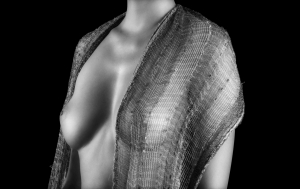
 Send us your questions
Send us your questions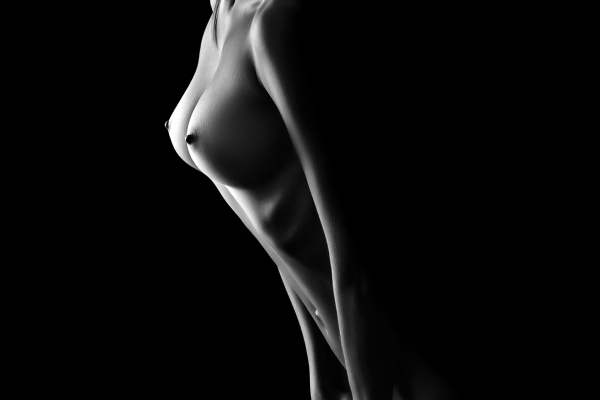

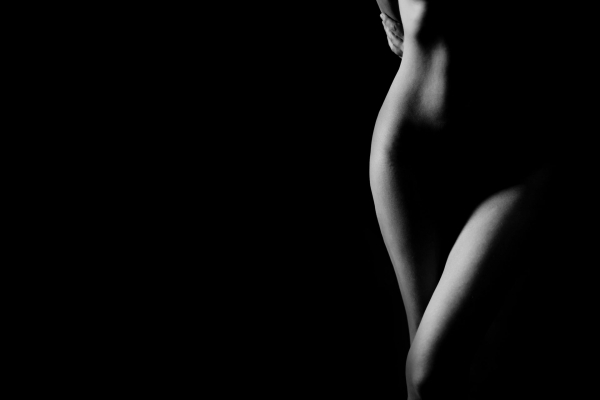

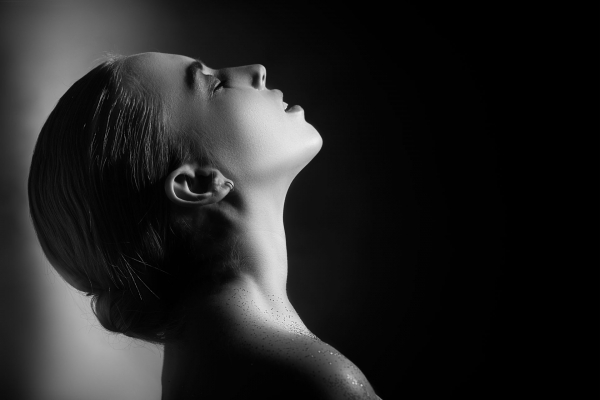




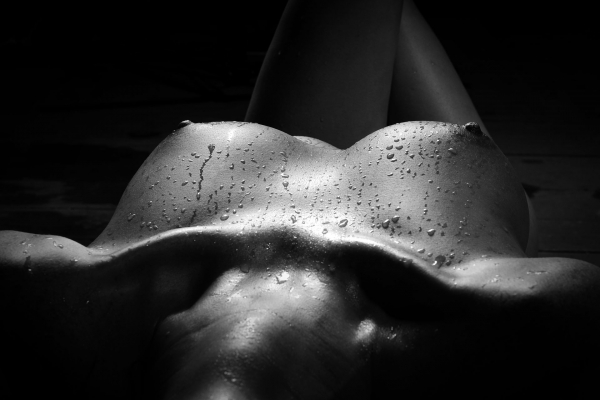




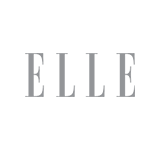








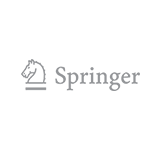





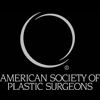
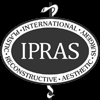
Follow us

